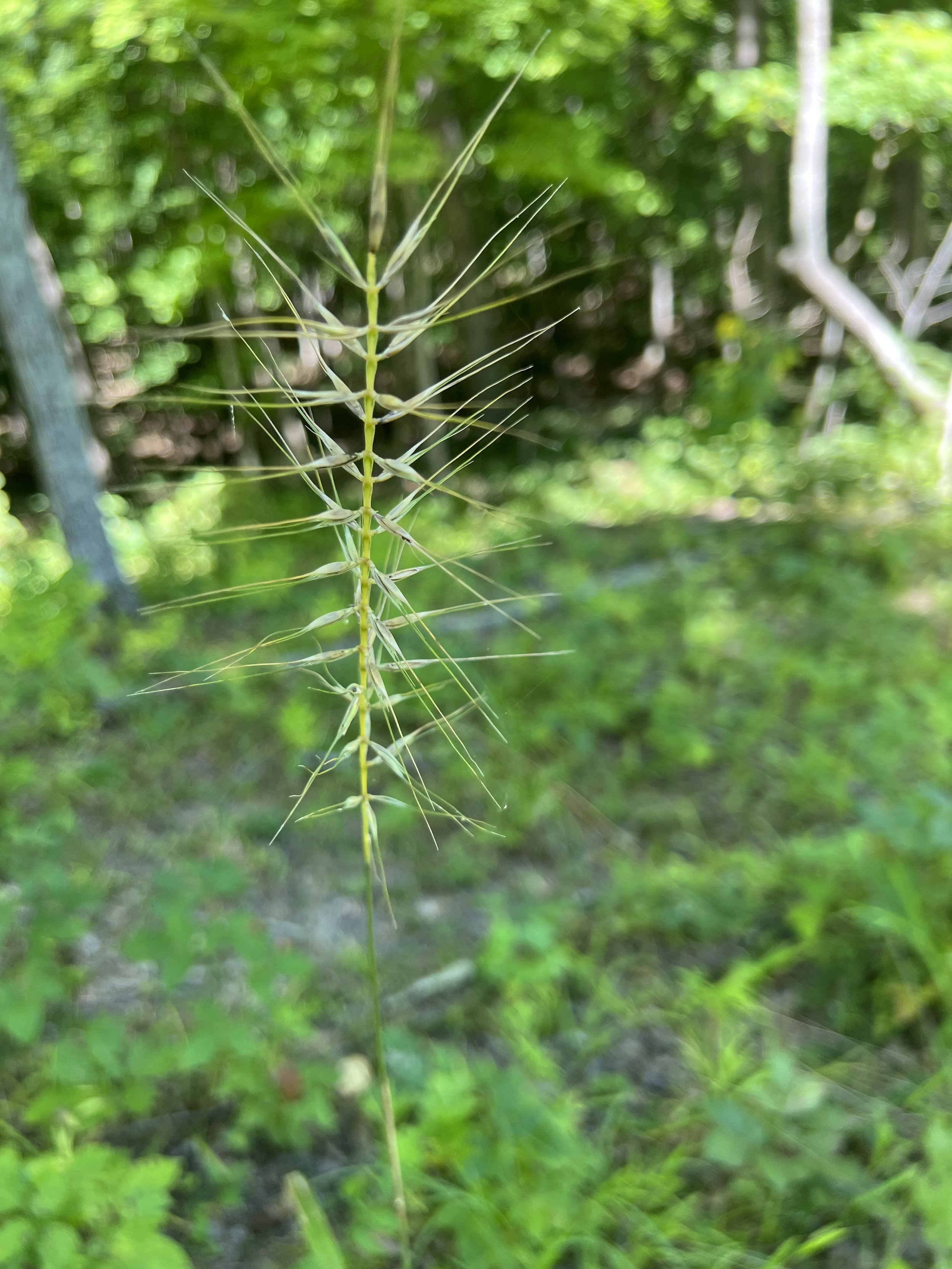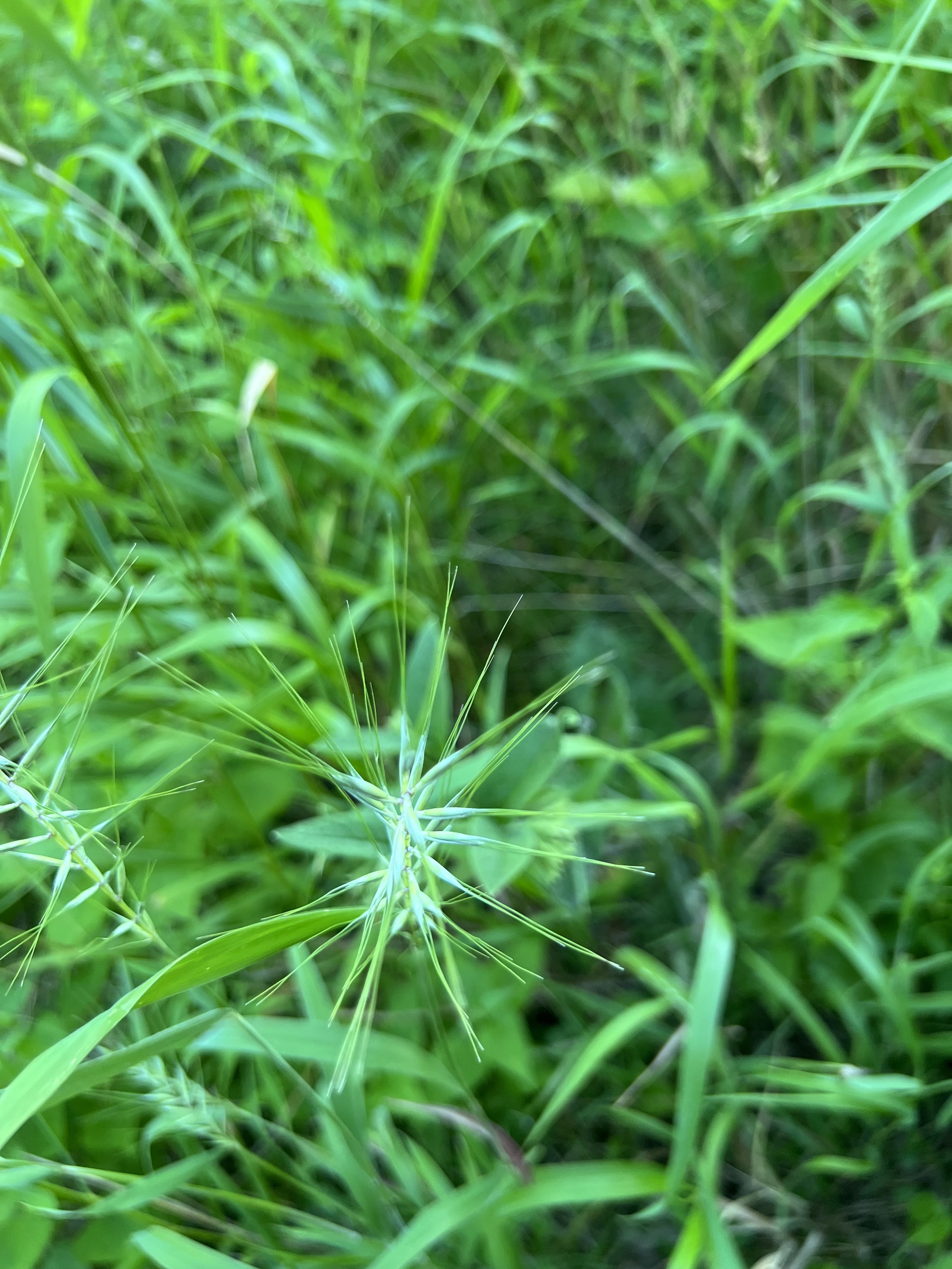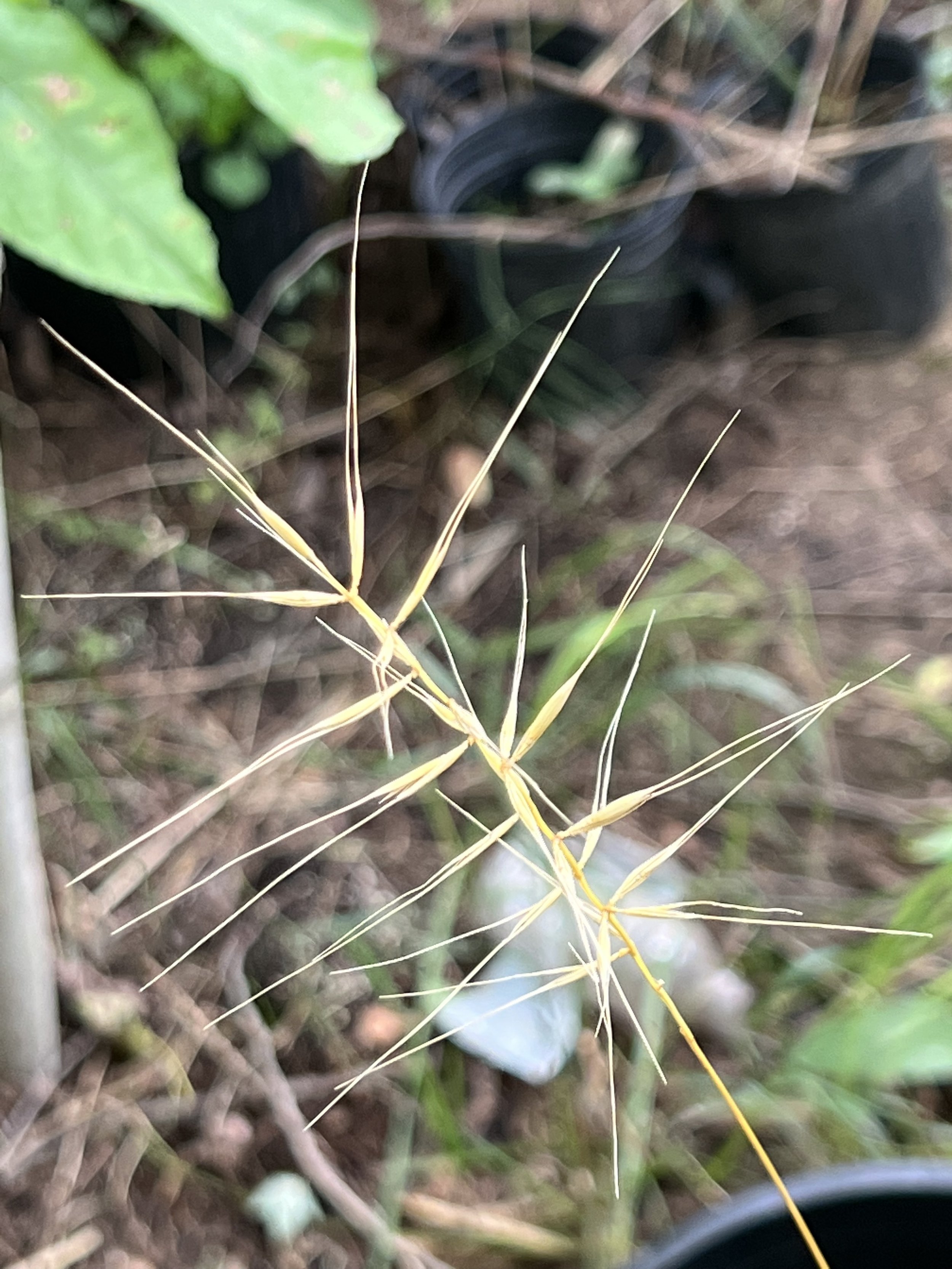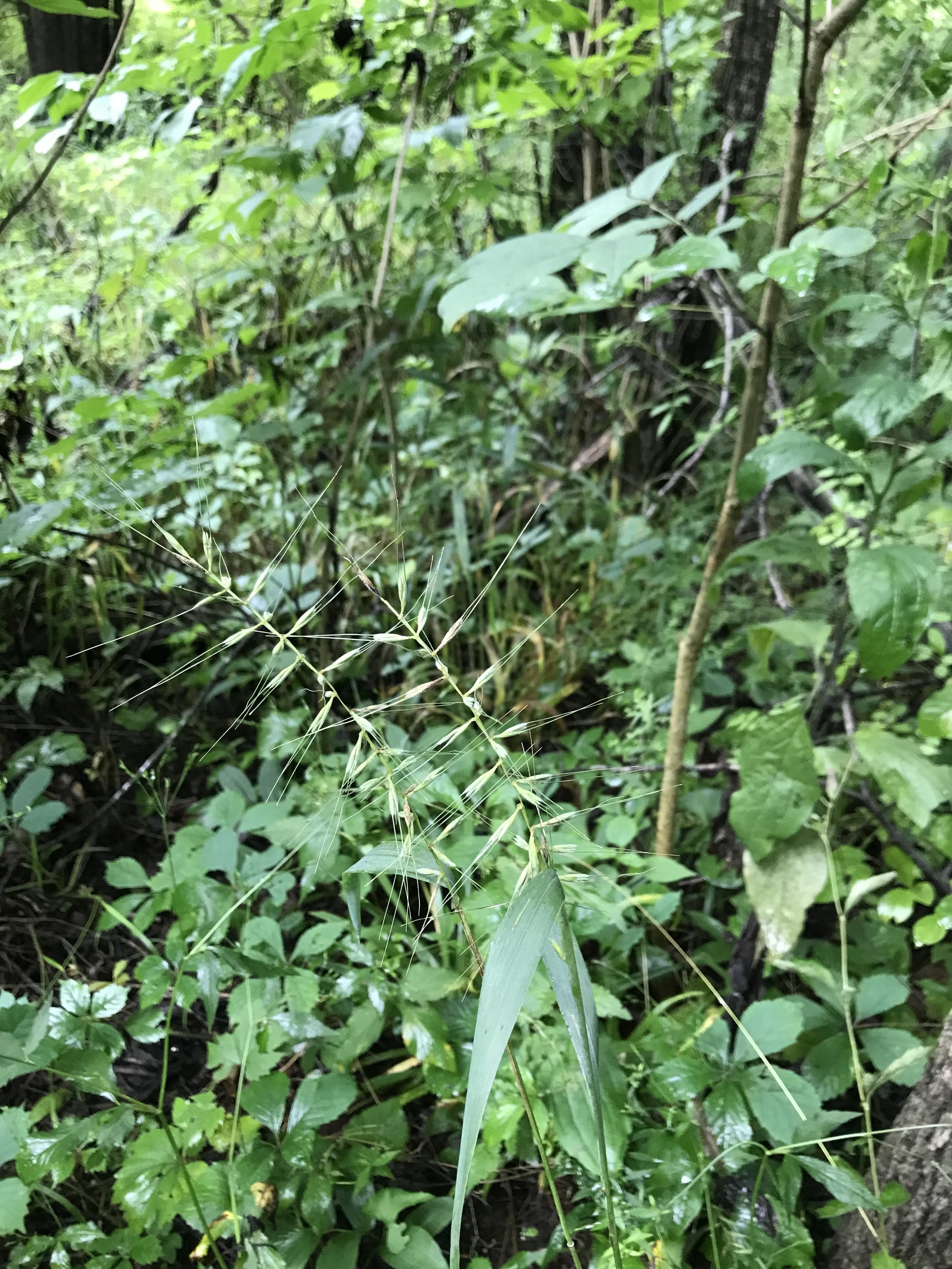 Image 1 of 5
Image 1 of 5

 Image 2 of 5
Image 2 of 5

 Image 3 of 5
Image 3 of 5

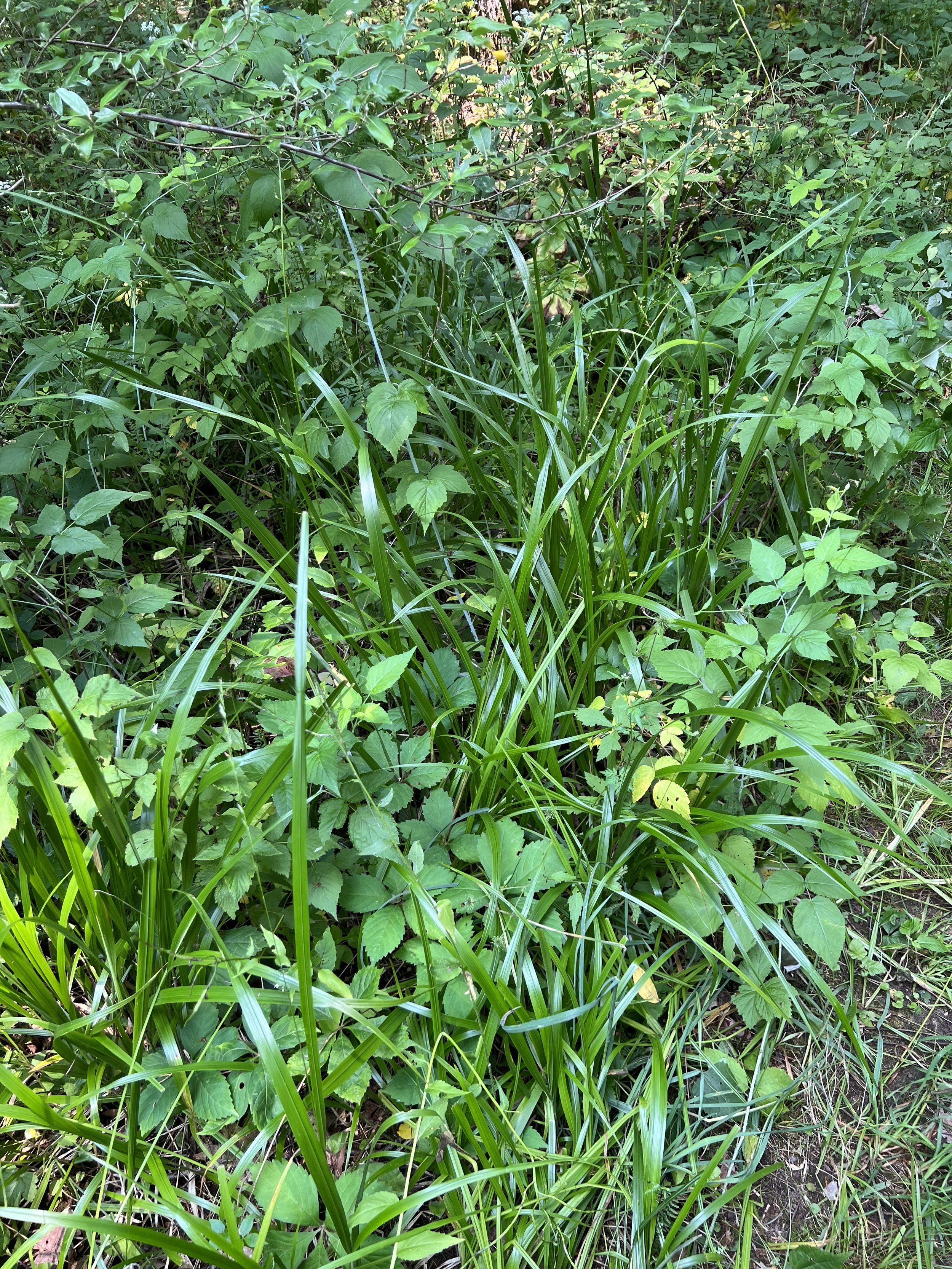 Image 4 of 5
Image 4 of 5

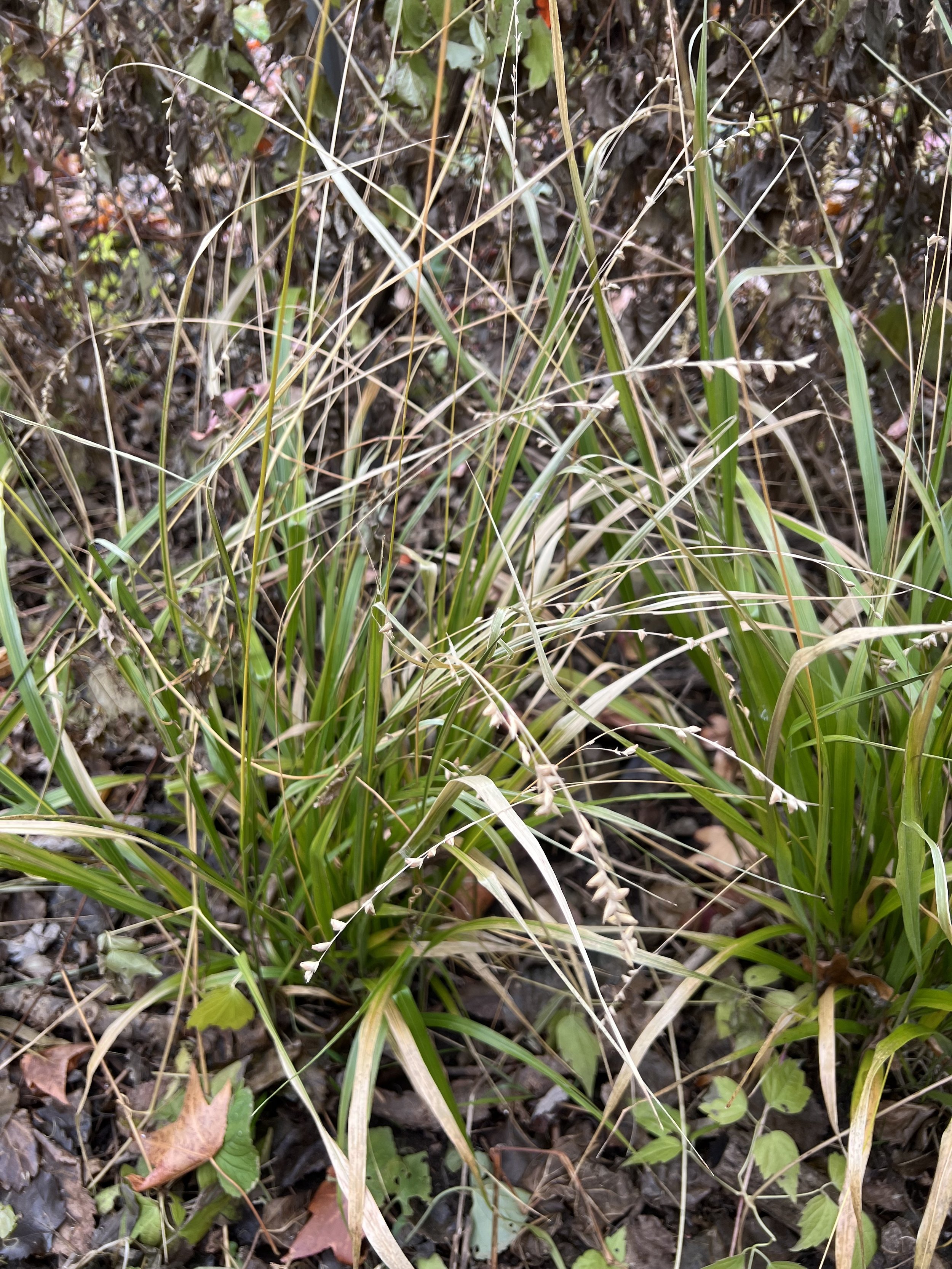 Image 5 of 5
Image 5 of 5

Beak Grass (Diarrhena obovata)
Beak Grass was recently taken off the “Special Concern” designation on Michigan Flora. It is quite local, but it is also usually abundant where it is found. Still, it has a Conservation Quotient of 9, which means that if you find it, you are likely in high quality habitat. The habitat it grows in naturally is generally near rivers and in floodplains in the southern part of the lower peninsula.
Beak Grass is a lush-looking, dark green plant with large, plump seeds. One way to identify it is by looking at the mid-vein on the leaf which is off-center. Once you have seen beak grass, you will always easily recognize it because of the shiny, emerald green color.
This grass does just fine in the home landscape in some shade! It spreads by rhizome and by seed. The seeds are great for birds and small mammals.
Give Beak Grass a try. We think you’ll love it!
Beak Grass (Diarrhena obovata)
Michigan Flora reference page for state distribution: Diarrhena obovata
Height: 2 feet
soil: medium
sun: part shade, shade
plant spacing: 12”
life cycle: perennial
family: Poaceae
Beak Grass was recently taken off the “Special Concern” designation on Michigan Flora. It is quite local, but it is also usually abundant where it is found. Still, it has a Conservation Quotient of 9, which means that if you find it, you are likely in high quality habitat. The habitat it grows in naturally is generally near rivers and in floodplains in the southern part of the lower peninsula.
Beak Grass is a lush-looking, dark green plant with large, plump seeds. One way to identify it is by looking at the mid-vein on the leaf which is off-center. Once you have seen beak grass, you will always easily recognize it because of the shiny, emerald green color.
This grass does just fine in the home landscape in some shade! It spreads by rhizome and by seed. The seeds are great for birds and small mammals.
Give Beak Grass a try. We think you’ll love it!
Beak Grass (Diarrhena obovata)
Michigan Flora reference page for state distribution: Diarrhena obovata
Height: 2 feet
soil: medium
sun: part shade, shade
plant spacing: 12”
life cycle: perennial
family: Poaceae
Beak Grass was recently taken off the “Special Concern” designation on Michigan Flora. It is quite local, but it is also usually abundant where it is found. Still, it has a Conservation Quotient of 9, which means that if you find it, you are likely in high quality habitat. The habitat it grows in naturally is generally near rivers and in floodplains in the southern part of the lower peninsula.
Beak Grass is a lush-looking, dark green plant with large, plump seeds. One way to identify it is by looking at the mid-vein on the leaf which is off-center. Once you have seen beak grass, you will always easily recognize it because of the shiny, emerald green color.
This grass does just fine in the home landscape in some shade! It spreads by rhizome and by seed. The seeds are great for birds and small mammals.
Give Beak Grass a try. We think you’ll love it!
Beak Grass (Diarrhena obovata)
Michigan Flora reference page for state distribution: Diarrhena obovata
Height: 2 feet
soil: medium
sun: part shade, shade
plant spacing: 12”
life cycle: perennial
family: Poaceae

